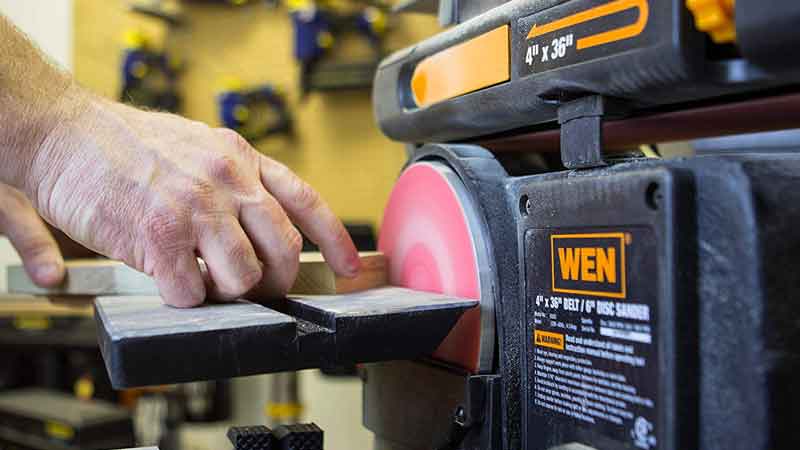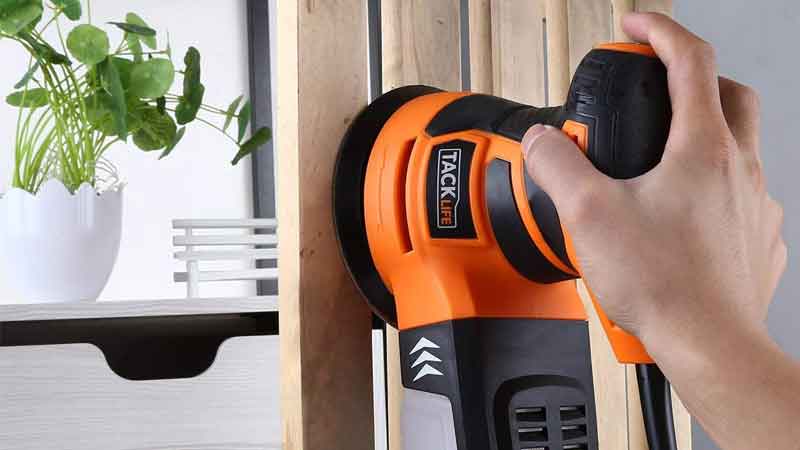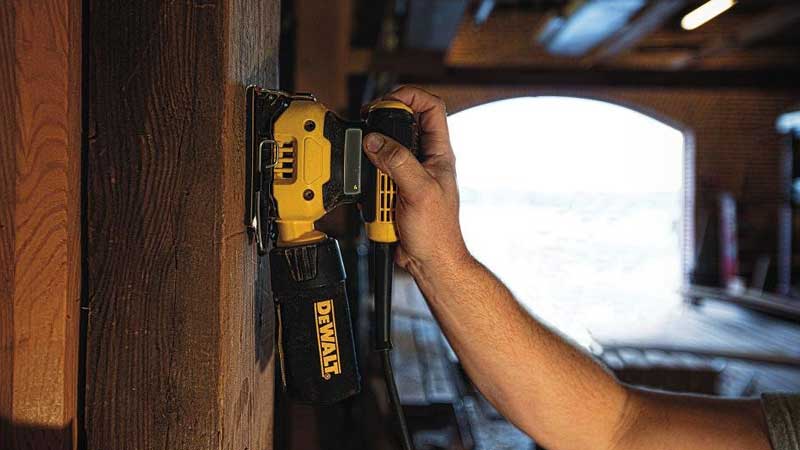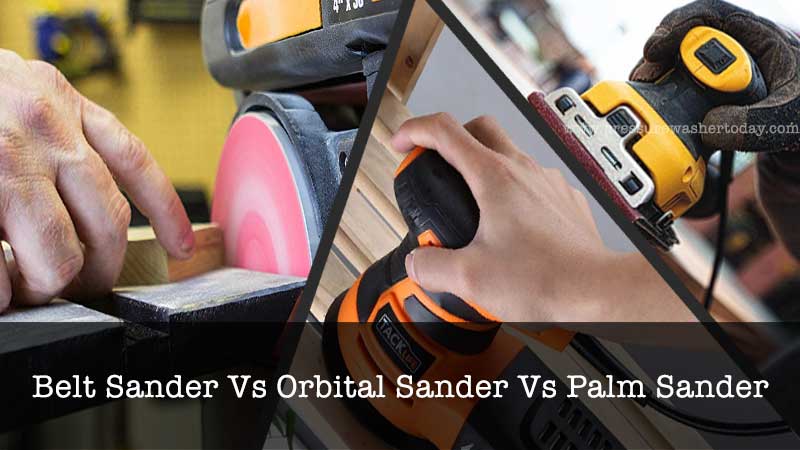Finding the right sander to finish your work is always important when you love woodworking. Sanding is the final step when you are working on a product. When you sand it, you finish the surface to a smooth look. While you can always sand by hand with just a piece of sandpaper, it is much more efficient to use a sander.
Sanding can take quite a long time when you are doing it by hand. Remember, it is important to use the proper sander for the job. A sander is an investment on which it is worth you spending.
When you are looking for the right sander, it is important to know the difference between a belt sander vs orbital sander vs palm sander.
Table of Contents
Belt Sander

Belt sanders are most widely used to remove material aggressively and quickly. The belt is constantly moving between two to three pulley systems. Many belt sanders automatically adjust to keep the belt in the center of the pulley while it is working.
Typically belt sanders come in 18 inches, 21 inches and 24 inches, which are perfect for those who want to do it themselves. Both of these types of sanders hold a belt that is 3 inches wide.
A sanding belt wraps itself around two drums. The front drum moves freely and on its own, while the back drum is motorized. Belt sanders have a lever to release the tension allowing you to change the belt easily and quickly. A knob on the sander allows you to adjust the tracking.
Check the below to select the best one for you.
The smallest belt sander, which is 18 inches, is the easiest one for you to control and is best for beginners. It has the best balance with a great mix of balance, speed, and power. The larger belt sander at 24 inches is much harder for you to control but covers a much bigger surface area. They also tend to be less stable.
A belt sander is excellent for taking old finishes, like paint, off the wood. A belt sander is great for gang sanding when multiple boards are attached to each other to smooth all the edges.
Belt sanders are the best tool for making furniture and other bigger projects. One downside of which to be aware is using a belt sander could scratch the wood.
Orbital Sander

There are two types of orbital sanders. One a regular orbital sander and the other is a random orbit sander.
Random orbit sanders are similar to sheet sanders, except they have round discs of sandpaper and it spins at high speeds. Random orbit sanders use oscillation that is random along the rotation to reduce gouges and swirls which gives you a better finish overall.
Woodworkers prefer random orbit sanders because of the round discs spinning orbitally and in a rotation. Working together, these two motions eliminate the chances of swirl marks on your wood.
Check the below to select the best Orbital Sander
Random orbit sanders usually have a velcro or sticky back to them to which the sandpaper attaches. There are holes in the sander that help remove dust from the surface of the wood. One downside to a random orbit sander is the sandpaper sheets are more expensive than regular sand paper.
Regular orbit sanders are compact sanders that you can use with one hand and you still have wonderful control. They use 1/4 of a regular piece of sandpaper. There is a flat sanding surface on which the sandpaper sits and is held on by clamps that spring.
The sanding pad vibrates on circular orbits. Orbit sanders are intended for fine work like rounding edges and removing putty. The orbit sander is lightweight, uses gentle motion, and is not ideal for heavy-duty projects. The good news to that it is really difficult for you to ruin the surface of your work with this type of sander.
The pads are five or six inches in diameter and use pressure-sensitive adhesive discs. This is an excellent sander for all purposes. It removes stock as well as sands smoothly, but sometimes it is less efficient.
Palm Sander

Palm sanders are often referred to as finish sander. As their name suggests, palm sanders fit in the palm of your hand. They are the most compact and lightest of all power sanders. They tend to have the weakest motor and use sandpaper with a grit of 160 to 220.
Check the below to select the best Palm Sander for you.
The palm sander moves the pad in orbit that are small and circular. Palm sanders have square pads on the bottom of the sander which held on with clamps. Palm sanders are incredibly easy to control. Palm sanders are great for light-duty jobs such as polishing finish wood that you do not plan to paint. Palm sanders are also the most affordable of power sanders.
There are some downsides to palm sander. One is you will not be able to remove paint or anything that has adhered to wood. Another downside is you must use the lightest touch when using a palm sander. If you push down too hard with it, you could potentially cause damage to your sander. You also go through a lot of pads when using a palm sander.
Final Words
When determining if you should use a belt sander vs orbital sander vs palm sander, it is helpful to know all the information about all these different sanders. If you need more about woodworking sander, You can check out here at Toolsever for detailed tips and advice. More information about the differences between these sanders helps you decide which one to choose.
Related Articles:

